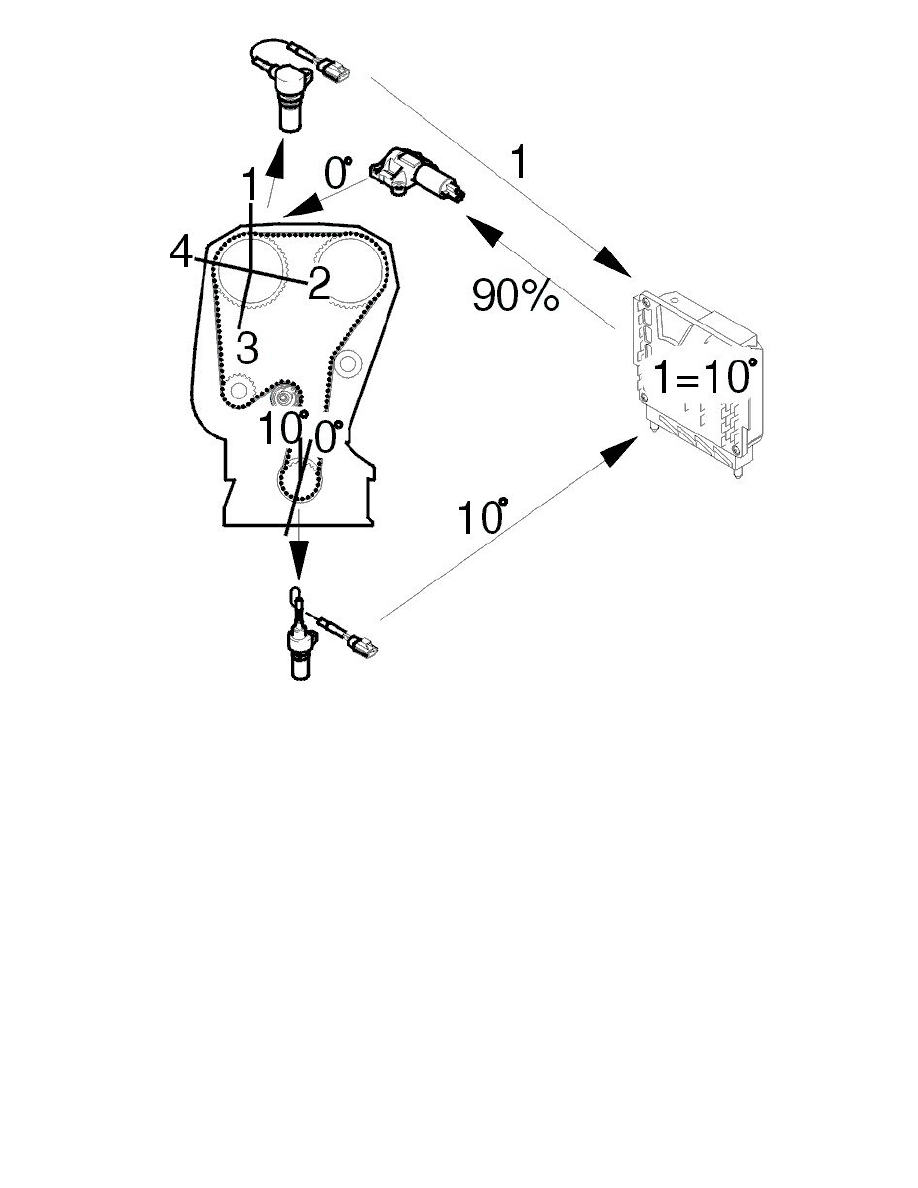XC70 L5-2.5L Turbo VIN 59 B5254T2 (2003)

Adaptation of the camshaft shift angle, flanks 1-4
(The illustration shows the adaptation of the camshaft shift angle at 10°)
When the engine has the "basic setting", the ideal value for the camshaft adaptation value is 0°. The different camshaft flanks correspond exactly with the
reference positions for the respective flanks. These values may deviate because of tolerances in the materials and installation. By adapting these
deviations the camshaft shift angle can be exact.
Adaptation is carried out as follows:
Camshaft control not active, the pulse ratio on the camshaft reset valve is set to approximately 90% by the control module. This means that the camshaft
0 position (mechanical resting position) is assumed and the camshaft angles (x°) for flanks 1-4, which are then detected by the control module, are the
adaptation values which are stored. (The adaptation values will be 0° if the camshaft adjustment in relation to the crankshaft is exact). When the control
module operates the camshaft to a particular target value, the stored adaptation value is added to the control module's target value.
Example: The control module has adapted flanks 1-4 to an average value of +10° (as the result of an incorrectly set camshaft for example). When the
control module needs to operate the camshaft to +10° (target value), the adaptation value is added to the target value which then gives a target value of
20° (10° +10°=20°).
The control module can adapt ±20°. A diagnostic trouble code (DTC) is stored in the control module if the adaptation is higher or lower than ±10°.
Other information:
-
If the timing belt is incorrectly positioned by one tooth on the variable valve timing unit, this corresponds to approximately 17° on the crankshaft.
This gives a theoretical adaptation value of 17°.
-
If the timing belt is incorrectly positioned by one tooth on the variable valve timing unit, this corresponds to approximately 34° on the crankshaft.
This gives a maximum adaptation value (20°)
-
The setting of the variable valve timing unit in relation to the camshaft and crankshaft affects the adaptation value (between -20° and +20°)
-
If the slide in the camshaft reset valve has jammed, the camshaft will be operate at maximum angle. This which will give an adaptation value at the
maximum limit (+20° or -20°)
-
The function of the variable valve timing unit affects the adaptation value (between -20° and +20°).
